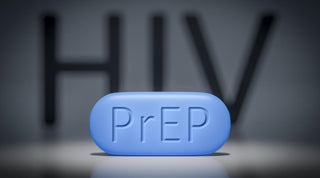Introduction
Pre-exposure Prophylaxis, or PREP, refers to the daily use of antiretroviral drugs by HIV-negative individuals to prevent contracting the virus that causes AIDS. When taken consistently, PrEP has been shown to reduce the risk of HIV infection through sex by over 90%. This once-a-day pill represents a major advancement in HIV prevention, especially for populations most vulnerable to the virus.
However, PREP has also been met with ethical concerns and fears that it could encourage risky sexual behaviors. As a brand focused on LGBTQ issues and health, we have closely followed the evolving public discourse around PrEP. In this piece, we aim to explore the complex pros and cons of this new technology through the lens of public health ethics. There are good-faith arguments on both sides of this issue. Ultimately, the goal must be balancing expanded access with responsible education and testing to curb new HIV infections.
Arguments in Favor of Expanding Access to PREP

Public health officials widely tout pre-exposure prophylaxis as a vital tool in ending the HIV/AIDS epidemic. PREP's ability to dramatically reduce HIV transmission makes a persuasive case for its broad adoption.
Most medical experts point to the clear evidence that PrEP works when taken properly. The CDC cites research showing PrEP reduces the risk of contracting HIV through sex by about 99% and through injection by over 70%. For an at-risk population routinely exposed to the virus, this is a dramatic decrease in transmission odds. PrEP drugs work by blocking HIV from establishing permanent infection when introduced to the body during exposure.

Some models estimate that expanding PrEP access to those most at risk could prevent over 70% of new HIV infections in the US. Significantly curbing new transmissions is key to eventually eradicating the virus. From a public health ethics standpoint, PREP holds promise as a cost-effective method for empowering at-risk groups to take control of their sexual health.
Beyond the public health benefits, many LGBTQ advocates argue that PrEP can reduce stigma and fear surrounding HIV. They believe having an effective daily prevention tool can help destigmatize the virus and reduce discriminatory attitudes. With PrEP, an HIV diagnosis becomes less of a common inevitability for at-risk groups. Broader access puts peace of mind and hope within reach.
Concerns and Counterarguments Around PrEP
However, PREP has also faced skepticism and opposition, especially in its early days. Some express concerns about real-world implications and possible unintended consequences of scaled-up PrEP programs. These arguments deserve thoughtful consideration.
One common early criticism of PREP was that it would encourage people to engage in riskier sexual behaviors. The logic argues that people would feel overly confident in PrEP's protection and abandon condoms or have more partners. Some feared this could negate PREP's preventative benefits by increasing other STIs.
However, most studies on patients using PrEP have found no significant increase in risk behaviors. A 2018 Lancet study saw a slight decrease in condom usage but no change in STIs. While lack of risk compensation is encouraging, experts caution that more long-term behavioral research is needed as PrEP use expands. Public health officials also need to closely monitor any correlation between PrEP and high-risk activities.
Another worry is that those on PrEP might use it as a reason not to get regular HIV tests. Frequent testing is essential for early diagnoses and stopping transmission chains. If patients contract HIV while on PrEP, stopping the medication could allow drug resistance to develop. PrEP programs need integrated testing requirements to catch these rare failures.
There are also access and awareness barriers inhibiting PrEP adoption among at-risk populations. Despite heavy federal investment, many either do not know about PrEP or cannot access it due to stigma, costs, or lack of knowledgeable healthcare providers. Use has lagged among low-income and minority men who have sex with men. Closing these disparity gaps is crucial for public health.
PrEP drugs can have side effects like nausea, weight loss, and kidney issues. Scientists are still studying the long-term impacts of daily use. With any new drug, long-term effects are uncertain until years of use pass. Any large-scale PrEP program should include monitoring for safety issues.

Toward Responsible Policy on PrEP Access and Education
These concerns leave policymakers with challenging risk vs. benefit calculations around how best to scale up PrEP. However, several strategies exist to maximize benefits and mitigate risks.
First, PrEP access must be paired with comprehensive safe sex education and resources. At-risk individuals need to understand nothing is 100% effective against HIV except abstinence. PrEP does not protect against other STIs. Condoms should still be encouraged even alongside PrEP use. Clean needle programs are also still vital.
Government-funded PrEP initiatives should focus first on those statistically most vulnerable to HIV: gay men, transgender women, injection drug users, and minority populations. Targeting outreach and building trust is key. PrEP should only be considered for an individual after a doctor determines their high risk status.
Strict HIV and STI testing guidelines should accompany PrEP prescriptions. Quarterly screenings enable frequent sexual health check-ups and early detection of breakthrough infections. This must be required for continued access to affordable PrEP drugs.
Policymakers should seek input from healthcare providers experienced serving at-risk communities. Gaining their trust and insights will improve real-world program design and access. They can help craft solutions to stigma and affordability barriers.
PrEP provides an opportunity to implement informed consent practices for at-risk individuals. Providers should clearly explain side effects and uncertainties to patients while avoiding value judgements. Patients can then make fully informed choices about using PrEP versus other prevention options.
Conclusion: Cautious Optimism for PrEP's Promise
Our understanding of HIV and prevention strategies will continue advancing over time. However, the current evidence makes a compelling case for expanding access to PrEP accompanied by ethical safeguards. At-risk groups stand to benefit greatly from this empowering new option for protection when used responsibly. PrEP, combined with condoms, clean needles, constant testing, and treatment for positive individuals, can get us far closer to ending the HIV/AIDS crisis. If policies balance PrEP's promise and risks wisely, vulnerable groups and public health both stand to gain.



